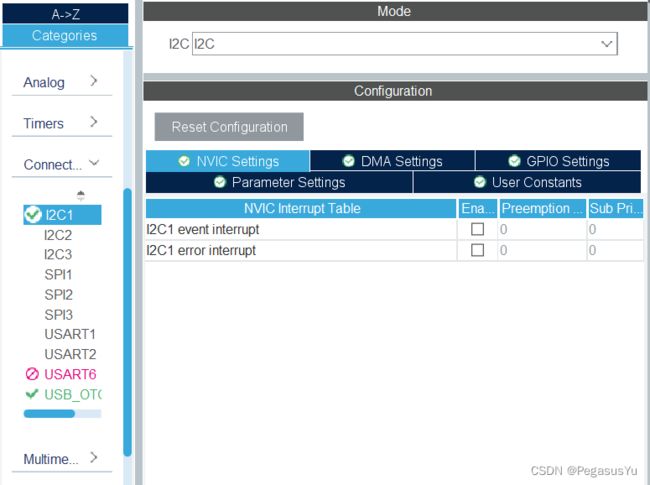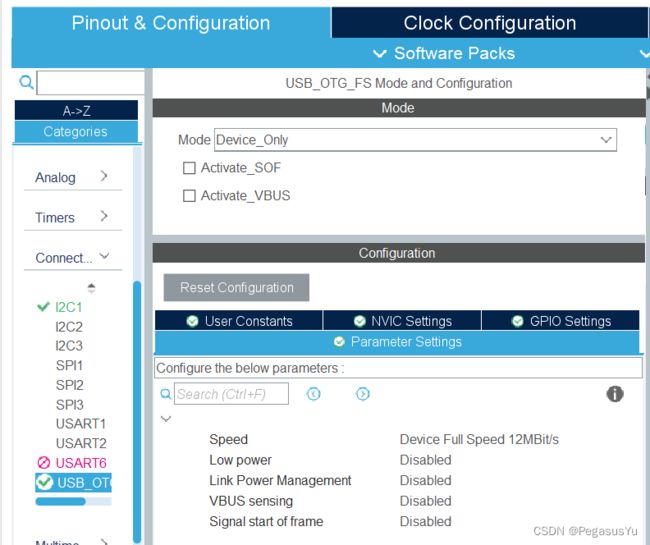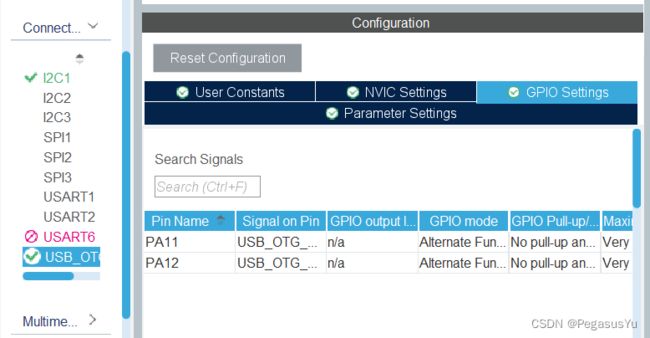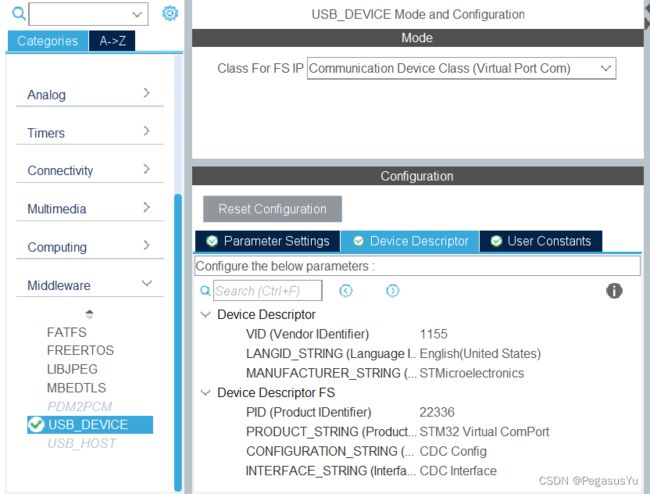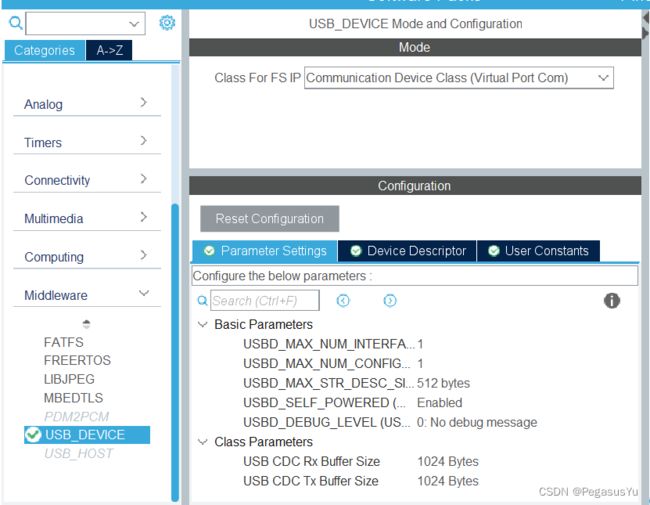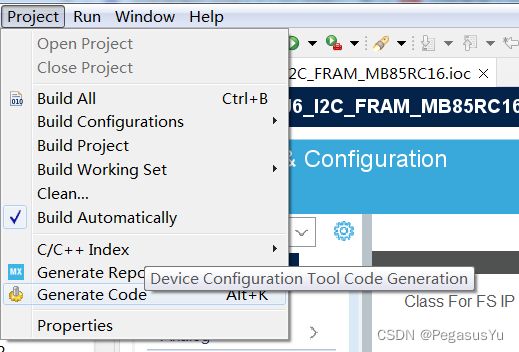STM32存储左右互搏 I2C总线读写FRAM MB85RC16
STM32存储左右互搏 I2C总线读写FRAM MB85RC16
在较低容量存储领域,除了EEPROM的使用,还有铁电存储器FRAM的使用,相对于EEPROM, 同样是非易失性存储单元,FRAM支持更高的访问速度, 其主要优点为没有EEPROM持续写操作跨页地址需要变换的要求,没有写之后的延时等待要求。MB85RC16是2K Byte(16K bit)的FRAM,能够按字节进行写入且没有写入等待时间。其管脚功能兼容相应容量的EEPOM:

I2C总线访问的FRAM更大容量的型号还有MB85RC128及MB85RC256等。
这里介绍STM32访问FRAM MB85RC16的例程。采用STM32CUBEIDE开发平台,以STM32F401CCU6芯片为例,通过STM32 I2C硬件电路实现读写操作,通过USB虚拟串口进行控制。
STM32工程配置
首先建立基本工程并设置时钟:
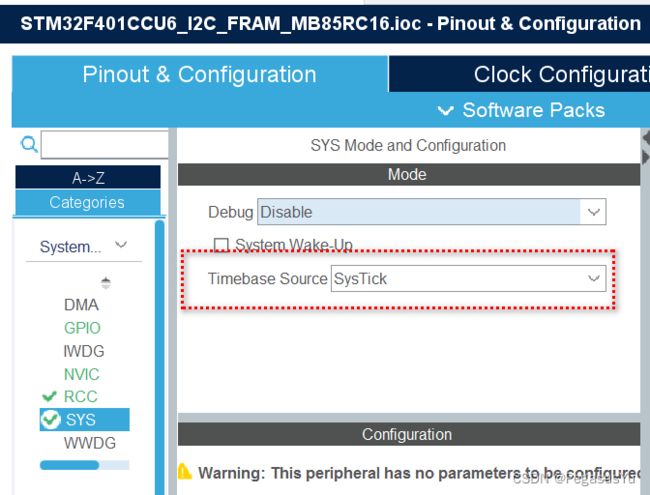

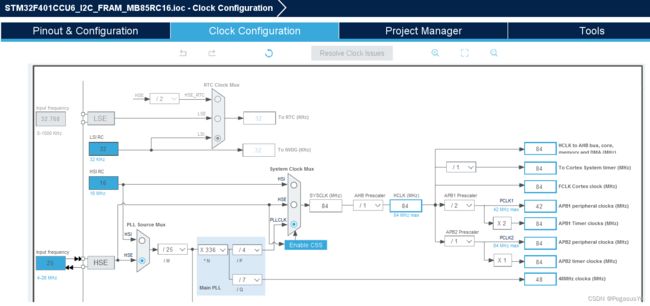
配置硬件I2C接口,STM32F401CCU6的I2C快速模式只支持400KHz速率:
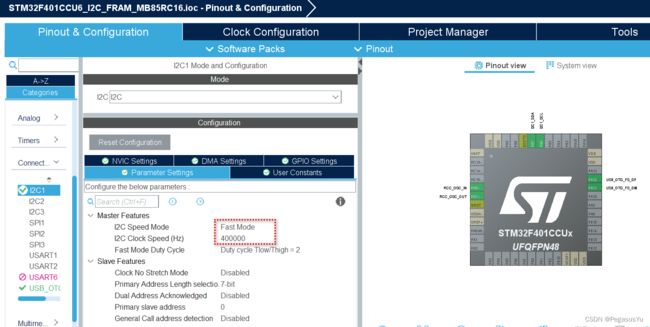
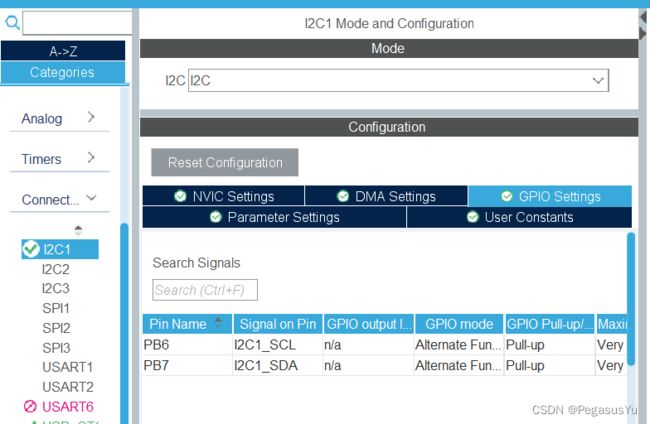
STM32工程代码
USB虚拟串口的使用参考:STM32 USB VCOM和HID的区别,配置及Echo功能实现(HAL)
这里的测试逻辑比较简单,当USB虚拟串口收到任何数据时,STM32在内部对MB85RC16写入从USB虚拟串口收到的数据,然后再回读出来,通过USB虚拟串口发送出去。
static int8_t CDC_Receive_FS(uint8_t* Buf, uint32_t *Len)
{
/* USER CODE BEGIN 6 */
extern uint8_t cmd;
extern uint8_t * RData;
extern uint32_t RDataLen;
RData = Buf;
RDataLen = *Len;
cmd = 1;
USBD_CDC_SetRxBuffer(&hUsbDeviceFS, &Buf[0]);
USBD_CDC_ReceivePacket(&hUsbDeviceFS);
return (USBD_OK);
/* USER CODE END 6 */
}
MB85RC16的设备默认访问地址为0xA0, MB85RC16的存储单元地址访问略为特殊,11位地址分为两部分,高位的3位放置于I2C设备默认访问地址的第3~第1位,I2C设备默认访问地址第0位仍然为读写控制位,由于采用硬件I2C控制,库函数自行通过识别调用的是发送还是接收函数对第0位进行发送前设置,因此,不管是调用库函数的I2C写操作还是读操作,提供的地址相同。11位地址的低8位通过在发送设备地址后的作为跟随的第一个字节发送。
完成的main.c文件代码如下:
/* USER CODE BEGIN Header */
/**
******************************************************************************
* @file : main.c
* @brief : Main program body
******************************************************************************
* @attention
*
* Copyright (c) 2023 STMicroelectronics.
* All rights reserved.
*
* This software is licensed under terms that can be found in the LICENSE file
* in the root directory of this software component.
* If no LICENSE file comes with this software, it is provided AS-IS.
*
******************************************************************************
*/
//Written by Pegasus Yu in 2023
/* USER CODE END Header */
/* Includes ------------------------------------------------------------------*/
#include "main.h"
#include "usb_device.h"
/* Private includes ----------------------------------------------------------*/
/* USER CODE BEGIN Includes */
#include STM32范例测试
STM32例程下载
STM32F401CCU6 I2C总线读写FRAM MB85RC16例程
–End–
